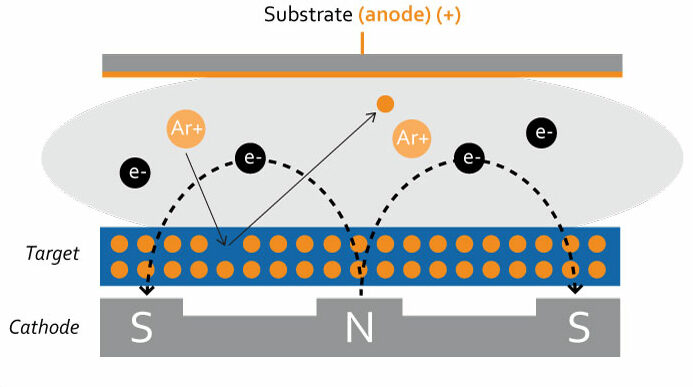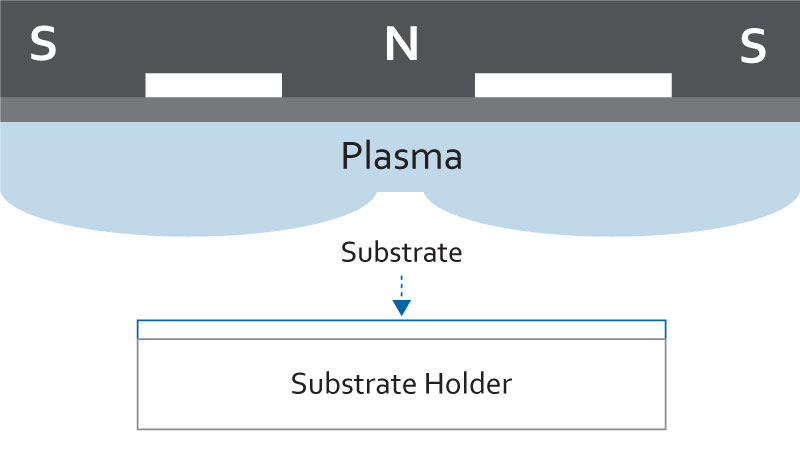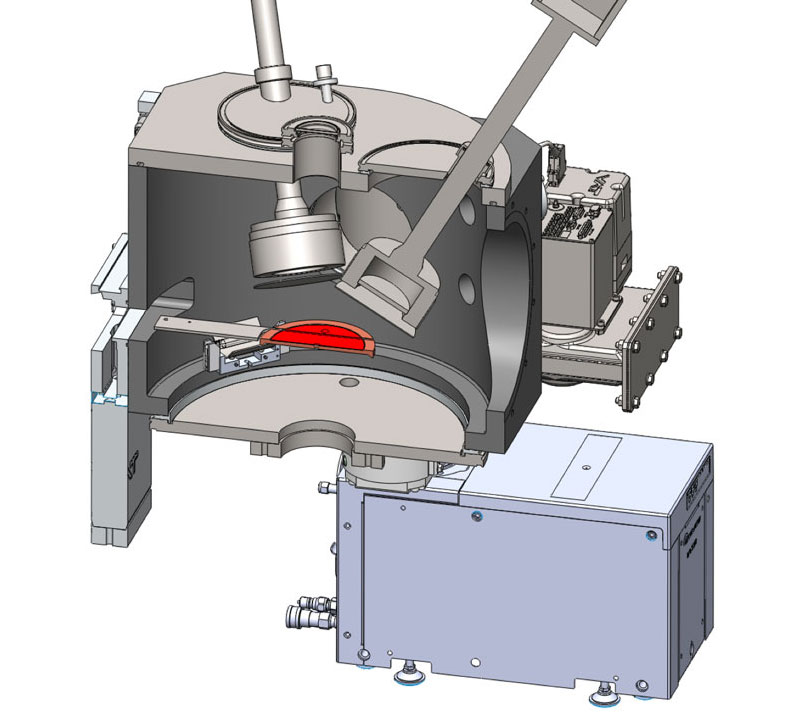
Posted on
Denton offers a number of magnetron configurations to meet different application requirements. Magnetron sputtering is a highly versatile thin film deposition technique for coating films with excellent adhesion and high density. Magnetron sputtering is a plasma-based coating process where a magnetically confined plasma is created near the surface of a target material. Positively charged energetic ions from the plasma collide with the negatively charged target material, and atoms from the target are ejected or “sputtered”, which then deposit on a substrate.

Denton Vacuum offers systems that are configurable to support a variety of sputtering approaches, each has its own benefits and uses. For instance, the Discovery magnetron sputtering platform provides a versatile, turnkey solution for confocal, planar, and inverted cylindrical sputtering geometries. It is highly configurable and can be tailored to meet specific requirements.
There are three sputtering platforms that can be configured with multiple magnetron sources:
- Discovery Confocal: this flexible and multi-source option accommodates multiple magnetrons with a tri-axis adjustment of radius, distance, and angular presentation to provide <+/-5% coating uniformity.
- Discovery V: a high rate, highly uniform deposition module, optimized for integration on the Versa platform. Configured with a large area planar magnetron. Provides highest productivity with <+/-2% coating uniformity.
- Discovery Isoflux: provides best-in-class uniformity on flat and curved substrate thanks to Denton’s patented inverted cylindrical magnetron technology. Uniformity as low as <+/-0.25% on 200mm wafers can be achieved.
Denton’s Discovery sputter deposition platforms
| Discovery Confocal | Discovery V | Discovery Isoflux | |
|---|---|---|---|
| Magnetron Source | Discovery 200: UP to four 4" diameter confocal sources Discovery 300: UP to three 6" diameter confocal sources | 12″ diameter cathode | Cylindrical cathode |
| Sputtering Type | Metal and Reactive Sputtering | Metal and Reactive Sputtering | Metal and Reactive Sputtering |
| Power Supply | DC/RF/Pulsed DC | DC/RF/Pulsed DC | DC/mid frequency AC |
| Vacuum | Cryo/Turbo | Cryo/Turbo | Cryo/Turbo |
| Substate Size | Discovery 200: Up to 200mm Discovery 300: Up to 300mm | Up to 200mm | Up to 200mm |
| Substrate Bias | RRF bias with dedicated power supply and auto matching | RRF bias with dedicated power supply and auto matching | RRF bias with dedicated power supply and auto matching |
| Plasma Emission Monitor | Yes | No | Yes |
| Coating Uniformity | <+/-5% | <+/-2% | <+/-0.25% |
Cathode Configurations
There is also a variety of cathode options including planar (round or rectangular), confocal, and Isoflux inverted cylindrical. Again, depending on your desired outcome, a specific cathode should be chosen.
- Planar Cathode (round or rectangular): the cathode is mounted directly above the substrate. This configuration offers tight uniformity on one side of the substrate during sputtering for properties such as film thickness, sheet resistance and refractive index. It also offers improved yield, good lift-off capability and a high deposition rate.

- Confocal Cathode: multiple cathodes are positioned confocally to the substrate. This configuration allows you to deposit multiple materials without breaking vacuum and can also help you minimize target cost and optimize material transfer efficiency.

- Isoflux Inverted Cylindrical Cathode: the substrate is placed on the inside of the cathode, and it is then sputtered on all sides, from all directions. This configuration offers excellent thickness control and precision, particularly for substrates with curved surfaces, which are used in precision optics.

Front-End Options
There are multiple front-end configurations available for the Discovery sputter deposition platform. These include single wafer load lock, cassette load lock, and transfer module – cluster configuration. Based on your throughput requirements, choosing the right one is important. Each configuration will yield different results:
- Single wafer load lock: a maximum of approximately 3 wafers per hour, 23,000 wafers per year
- Cassette load lock: a maximum of approximately 24 wafers per hour, 185,000 wafers per year
- Transfer module – cluster configuration: a maximum of approximately 250 wafers per hour, 2 million wafers per year

Magnetron sputtering is often chosen for the deposition of metallic and insulating coatings that have specific optical or electrical properties. Denton has ongoing internal R&D programs to help advance the state-of-the art in both metallic and reactive sputtering.